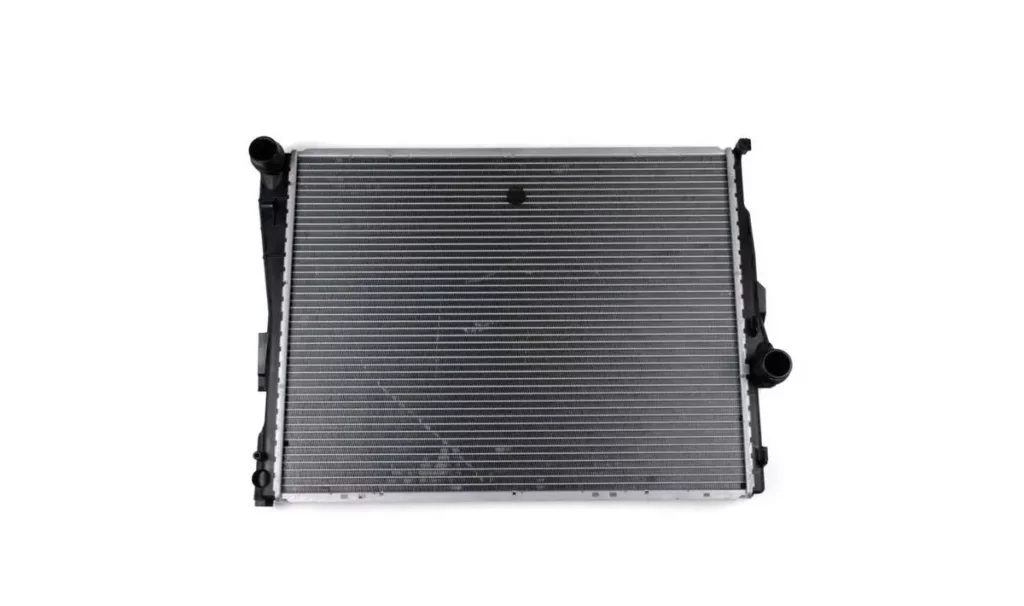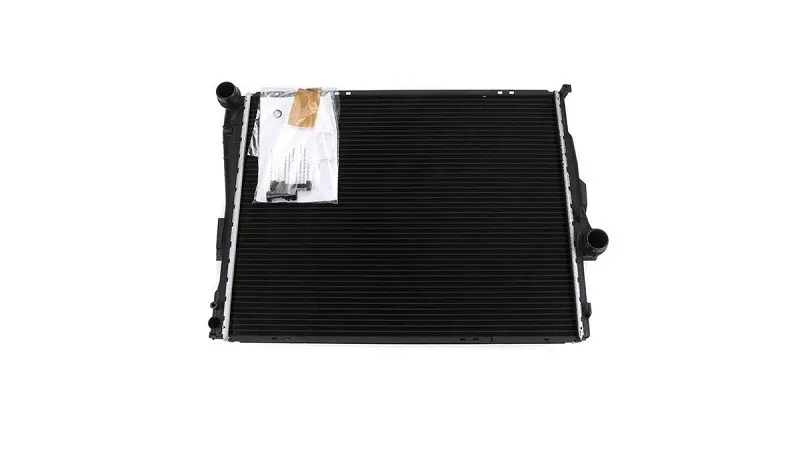The BMW M54 was introduced in 2000 to replace the M52 engine. Over its six-year production run, the M54 would power the E39 5-Series, E60 5-Series, E85 Z4, and most famously, the E46 3-Series, amongst other models. As it turned out, this engine failed to comply with the stringent emissions norms in four U.S. states, and BMW was forced to produce a special iteration of the engine — the M56.
The M56 met the SULEV (Super Ultra-Low Emissions Vehicle) requirements in California, New York, Massachusetts, and Vermont. It was used on the BMW 325i, one of BMW’s most popular models at the time. This led to a lot of confusion amongst owners who wondered if the M54 parts were compatible with the M56. One of the most common parts that came up in these searches was the M56 radiator. Is it the same as the one on the M54, or is it a whole different part?
The development of the BMW M56 was accompanied by a redesign of all of the M54’s supporting components. And thus, an M56 radiator is not the same as the one on cars that use an M54 engine. This article will look at the two engines, the differences between the two, and why the radiators are not interchangeable.

BMW M54 vs. BMW M56
Due to growing concerns over air quality, the Clean Air Act set new vehicle emission standards for vehicles sold in the United States. One of these standards is SULEV, adapted by select states in the country. According to SULEV requirements, a car was to produce 90% lower emissions than the average gas-powered car at the time.
The BMW M56 engine was BMW’s very first SULEV-compliant engine, and the manufacturer made some significant changes to the M54 engine to turn it into the M56. One of the fundamental changes included the addition of a carbon filter in the air filter housing that prevented hydrocarbons from escaping from the air intake system.
Additionally, the M56 engine had to feature dual downstream “warm up” catalytic converters that didn’t take as long to heat up compared to the unit attached to the M54 engine. In turn, it was more efficient at filtering out pollutants from exhaust gases. Other changes included upstream oxygen sensors, a tweaked VANOS system, different pistons, and redesigned fuel injectors.
Lastly, components like the fuel tank, the tank ventilation system, and their supporting components — like the fuel line, injectors, etc. — were all made of stainless steel. The fuel pump and filter were sealed inside the gas tank to ensure no external factors could affect their efficiency. This was one of the most significant flaws with owning an M56-powered car. If you had problems with either, you’d have to replace the entire fuel tank.
BMW M54 Radiator vs. BMW M56 Radiator
The M54 and M56 are similar engines only on paper. In reality, they are very different from each other. Unsurprisingly, they required two different radiators. One of the most notable differences was that the M56 radiator featured what BMW called a ‘Direct Ozone Reduction System’. This was a base metal oxide coating on the heat exchange surface of the radiator that reduced ambient ozone in the air by converting it into oxygen.
While this played a crucial role in reducing the negative impact the M56 had on the environment, it was also notably more expensive. And, due to its unique construction, it’s near-impossible to find an aftermarket option built to be compatible with the M56. Your only option, then, is to get a genuine BMW part that currently carries a hefty price tag of over $410.
In comparison, you can get an M54 radiator for significantly less, with some reliable aftermarket options costing just over $100.
It’s worth noting that the SULEV-compliant, M56-powered BMW 325i came with a 15-year/150,000-mile warranty that covered all emission-related components. However, the last batch of these cars was produced in 2006, meaning that the warranty expired last year, in 2021. This is one of the main reasons why several owners are now wondering if they can save a few hundred dollars by getting an M54 radiator instead of an M56 radiator.
Can You Use an M54 Radiator in Place of an M56 Radiator?

Technically, the answer is yes. Multiple owners have reported that they’ve been able to directly swap their faulty M56 radiator out for an M54-compliant one. However, there are a few caveats to this. For starters, the M56 radiator comes with a compliance sensor that checks for the presence and condition of the exterior coating and monitors coolant temperature. Adding an M54 radiator onto your car might trigger the check engine light as the ECU won’t be able to detect the sensor anymore.
It’s worth mentioning that several owners have reported that their M56 radiator didn’t include a sensor — in which case, they were successfully able to use an M54 unit without any trouble. If you’re considering using an M54 radiator with an M56 engine, you should check for any wiring indicating a sensor in place.
With all that said, you should know that BMW strongly recommends against using the M54 radiator on the M56 as it affects the emission performance of the engine and may land you into some legal trouble. If you look at your M56 radiator, you’ll probably find a sticker that reads: “This vehicle is equipped with an ozone reduction radiator that is an element of the vehicle emission control system. Changing to a radiator without equivalent ozone reduction properties is a violation of air pollution regulations.”
For this reason, you’re unlikely to find an authorised technician to carry out this swap for you. If they do, they violate EPA laws, which can have severe legal repercussions for the shop.
Swapping to an M54 radiator may also result in mechanical issues down the road. Since the M56 radiator was covered by warranty until last year, not too many people have experimented with using an M54 radiator in its place. Thus, the long-term repercussions of doing so are still relatively unknown.
Buying a genuine BMW M56 radiator demands a heftier price upfront, but it’s certainly the safer route to take.
Get a Genuine BMW M56 Radiator Now
If you own a BMW 325i with an M56 engine, you are probably familiar with the higher cost of ownership by now. Since this engine was sold only in select North American states, sourcing replacement parts can sometimes be a hassle. Bimmers.com has one of the largest inventories of genuine BMW, OEM, and aftermarket spares in the United States.
To see all the parts in stock for your car, simply enter the year and model of your vehicle into the search tool, and filter the results based on your requirements.





